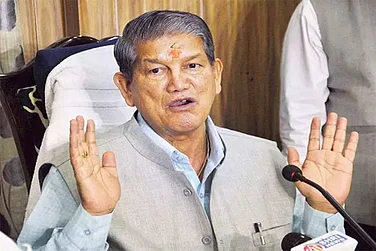From footballers to gospel singers, TV presenters and other local celebrities, the Zoram People’s Movement (ZPM) embraced its young candidates to win the hearts of Mizoram’s youth, challenging the usual approach and the same-old faces that the state has been witnessing for years. Former international footballer Jeje Lalpekhlua contested and won from the South Tuipui constituency, while All India Football Federation (AIFF) executive member, Lalnghinglova Hmar, who joined the party only six months ago, bagged the Aizawl West-II seat. The ZPM also gave Mizoram the youngest woman MLA, Baryl Vanneihsangi, who won from Aizawl South-III.
The ZPM’s victory in the Mizoram assembly elections is a testament to their extensive work to make a political debut in Mizoram, overturning the historical two-party trend between the Mizo National Front (MNF) and the Congress. The ZPM defeated the incumbent Zoramthanga government by a landslide margin, winning 27 out of the 40 assembly seats. This massive lead against the MNF’s 10 seats, Bharatiya Janata Party’s (BJP) two, and Congress’ one seat is a defining moment for Mizoram’s politics, where the people, desperate for a change, illustrated their resentment against the MNF and the Congress.
Zoramthanga, the MNF supremo and the incumbent chief minister of Mizoram, tendered his resignation soon after losing his seat in Aizawl East-1 by over 2,000 votes against ZPM’s Lalthansanga. Corruption charges and his alliance with the BJP at the Centre seem to have been the biggest factors in his defeat.
Formed only in 2017 as a coalition of smaller regional parties, the ZPM is Mizoram’s newest political party. While the party contested the 2018 assembly polls independently, this is the first time it contested after being registered as a political party.
While it had already built a strong footing in the urban districts, what was surprising, or not, is that the party secured an equally triumphant victory in the rural districts too. Speaking to Outlook, Hriata Sailo, a political observer and researcher, highlights how the ZPM used the access to internet, which has penetrated the rural districts of Mizoram, and mobilised the “tech-savvy” youth to expand their vote base and reach out to the masses.
“Due to the mismanagement of the current dispensation, most people were already seeking an alternative to the MNF and the Congress. They were fed up with the MNF and the Congress. The ZPM used this as an opportunity,” says Sailo.
Political analyst C Zonunmawia says that while the ZPM is still at a nascent stage at the organisational level, their vision and enthusiasm presented them as the “only alternative” to the same-old politics in Mizoram. Corruption and nepotism have been seen as the biggest factors in the MNF’s defeat.
In addition to this, the people of Mizoram were also not satisfied with the performance of the MNF government during the Covid-19 pandemic. Lalduhoma, an IPS office-turned-politician and ZPM’s CM face, has long been in the political fray but this time, he managed to mobilise his support base.
While the scale of achievement the ZPM received was beyond anyone’s predictions, the victory was a surety, considering the wave of support they have received.
Anthony Lalchhuanmawia, a PhD scholar at IIT Bombay, says that with the ZPM’s triumph, Mizoram has finally departed from its long-standing pattern. “One of politics’ primary virtues, according to political philosopher Arendt, is natality, or the emergence of something new that provides an opportunity to begin again by shedding the shackles of the past. There is a glimpse of this ‘natality’ happening in Mizoram today,” he says.
Manipur Issue
The MNF leaned heavily on ‘Mizo nationalism’ to win the elections. CM Zoramthanga had made an emotive appeal to the Chin refugees from Myanmar to provide them shelter against the Centre’s order. He had also called the Kuki-Zo community in Manipur his “own blood”. However, none of it worked in his favour.
If anything, Mizoram’s sentiment towards the Manipur issue further affected the MNF’s below par performance due to Zoramthanga’s ties with the National Democratic Alliance.
“The situation in Manipur is very close to the hearts of the people in Mizoram, where the Kuki-Zo community is the majority. Born out of the uprising of 1966, the MNF considers itself the torchbearer of Mizo nationalism, but they have failed in governance, social issues and financial management, and had nothing more to offer. Not only did it lead to Zoramthanga’s defeat, but several other MLAs have lost their seats due to his failure,” says Zonunmawia.
Hindutva Anxiety
The BJP won two seats in the assembly elections against one in 2018. However, there is a strong sentiment among the majority of Mizoram’s Christian community that continues to resist the party from entering state politics. Even going by this year’s results, the vote share of the Congress is more than that of the BJP, although the Congress won only one seat, Zonunmawia explains.
Both the seats the BJP won—Palak and Siaha—are in the southern part of Mizoram, dominated by the Marra and Chakma tribes. “They have targeted and penetrated the minority areas, but it could still take them at least 10 years before making a dent in Mizoram politics,” he notes.
Ahead of the elections, the ZPM had vowed to “never forge a post-poll alliance” with the BJP. “People are eager to have a new government because they want to test a new system of governance. They don’t expect a coalition government,” the party’s working chairman, K Sapdanga, had said in a press conference.
While there is still some anxiety in Mizoram’s society ahead of the 2024 Lok Sabha elections, all eyes are now on the new government. Will the ZPM be able to live up to its promises?

























